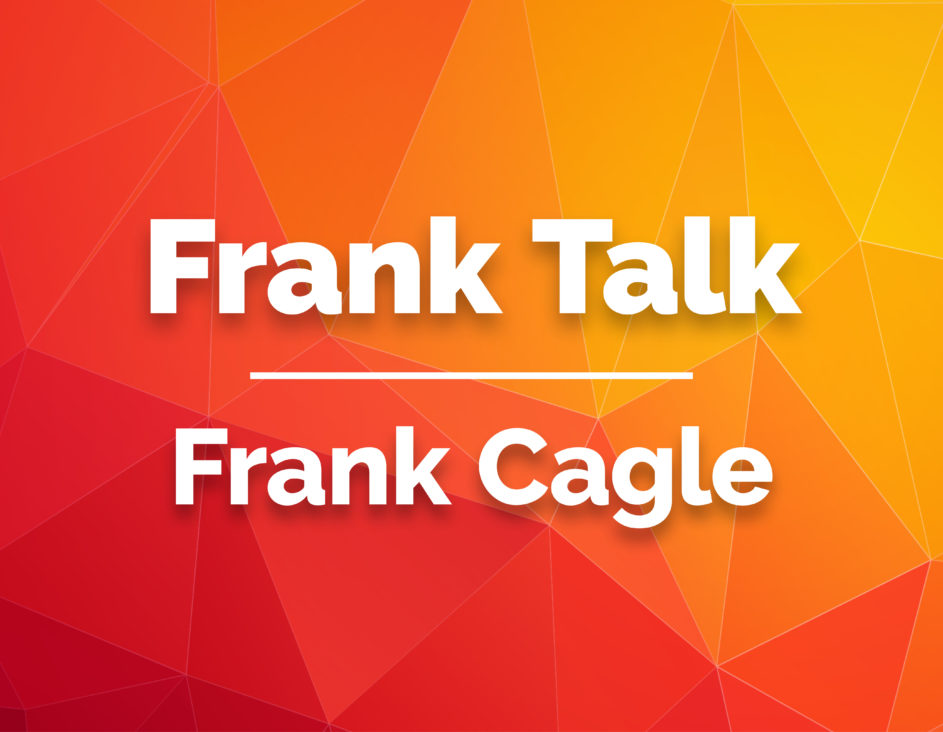From my time as managing editor of the News Sentinel to my stint as deputy to Mayor Victor Ashe I heard a lot of “pitches” seeking support for downtown development projects.
There was the huge jail complex where Marble Alley apartments now stand. A dome over Market Square. The Gay Street planetarium. One of my favorites was the two guys who asked for $100,000 for a feasibility study to park a cruise ship on the South side of the river to serve as a downtown hotel. Guests would be ferried to downtown via small boats.

Frank Cagle
I asked them if they had ever heard of the Chickamauga Lock in Chattanooga and how they proposed to get the cruise ship up the river. They explained that’s why they needed the money for the feasibility study, to work out problems like that. I explained that I didn’t think there was enough grease or soap to get a cruise ship through the dam, sorry.
Most elaborate development proposals start with asking for the taxpayers to provide up-front money to get started or subsidize the project. The proposals generally let developers assume the profits and the taxpayers cover the risk. I tell you all that in order to share my skepticism of big deals usually sold under the rubric public-private partnership.
That brings us to Randy Boyd’s proposal for a baseball stadium just east of the Old City, So what’s different about this proposal?
Well, first off Boyd has skin in the game already. He spent over $6 million for the property. He proposes $142 million in private investment in condos, businesses and apartments surrounding the field. He has already paid for the architectural specs to ensure the proposal fits. He also has a baseball team to put in the stadium, something it is very hard to achieve given Major League Baseball’s cutbacks on farm teams.
The projections are for $115 million in additional taxes to city and county government and 3,000 jobs. Construction spending of $207 million. The economic impact over 30 years is $1.126 billion.
These are projections for private investors to worry about. The bottom line for city council and county commission is do you spend $65 million to pay for the stadium in order to get $142 million in private investment, jobs, and $115 million in additional tax revenue.
The difference here from other big proposals is what I said up top. Boyd has skin in the game and he has every incentive to make it a success. Local governments can also rely on his track record and his reputation. I hardly think the president of the University of Tennessee has a scheme that will put local taxpayers at risk. He has already brought jobs to downtown by leasing space in the TVA Tower for system offices. He and his family have other investments in the Old City.
I have heard it argued that it is unfortunate that Knoxville’s downtown is circumscribed by the river to the south, I-40 to the north, Henley Street to the west and James White Parkway to the east. I have argued that this compactness has contributed to the success of downtown development. Like Manhattan, there is a limited amount of square footage in downtown. That makes each parcel more valuable and adjoining property benefits.
I worked my way up the river back in the 1970s from Muscle Shoals to Knoxville. I saw the main street in Sheffield, or the bypass in Decatur, which stretch for miles. Property could be improved and development could occur on one block but the impact and the momentum were lost in a long row of vacant buildings on the next blocks. Once Market Square and the 100 Block of Gay Street began to come alive the rest of downtown Knoxville came along quickly.
My point here is that now that downtown has built out, and even extended up Central Avenue, it’s poised to break out. The stadium, condo, shops, apartments proposed will connect downtown, the Old City and East Knoxville in a way that nothing else has.
My initial skepticism about the project was the likelihood of a baseball stadium drawing enough spectators downtown over the course of a season. But given that the stadium will be configured for concerts, soccer matches and other outdoor events (softball tourneys anyone?) such a venue has been successful in other places.
Baseball attendance is a problem for the baseball team to solve. The team averages about 4,500 fans a game over the course of a season at the I-40 exit to Sevierville. If you think about it, how likely is it that tourists go down Highway 66 to Pigeon Forge or Gatlinburg and then say “hey, let’s get back on that damn highway and brave bumper-to-bumper traffic and drive out to I-40 and go to a baseball game!”
So maybe the baseball team isn’t relying on tourists for attendance. If it’s Knoxville people going to games then they will find the Old City closer. Of course, that might require suburbanites from West Knox to learn how to park in a parking deck.
Two years from now, assuming there is a return to normal, we can sit shoulder to shoulder in a stadium and watch concerts and baseball games. Downtown has been on an upward trajectory. Let’s don’t lose the momentum.
Frank Cagle is a veteran newspaper editor and columnist.

